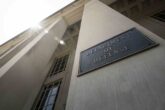March 12, 2018
For the Navy, Strike Capability Should Be Top Priority
The service risks seeing its relevance decline in A2AD environments
The United States Navy needs to make some hard choices if it wishes to remain relevant in the Anti-Access/Area Denial (A2AD) security environment that lies ahead of it. It must begin to adjust its strategy as well as its accompanying shipbuilding and aircraft-procurement plans to enable it to fight and win within the emerging great-power competition. This new environment, at last recognized in President Trump’s National Security Strategy and the Secretary of Defense’s National Defense Strategy, requires the Navy to strike enemy capitals and other vital centers of gravity from range, but the Navy’s decision to bypass a carrier-based strike asset, and now even to push off its acquisition of an unmanned mission tanker, suggest that it is not taking A2AD great-power competition seriously. Its decisions place the future relevance of the entire maritime service, at least as it is presently composed, at risk.
The modern Navy is built around the “super carrier.” Carriers, which the Navy had from the 1920s through the early 1950s, launched light fighters and attack aircraft that could carry small loads of ordnance short distances to targets. However, in World War II the Navy lost numerous ships and carriers to Japanese bombs and kamikaze attacks because the short range of U.S. Navy aircraft pulled the ships that carried them in closer to targets, which also placed the ships within range of Japanese aircraft. Navy leaders such as Vice Admirals Marc Mitscher and John S. “Slew” McCain realized that the Navy needed longer-ranged aircraft to allow commanders to keep their ships safely away from enemy shores while still enabling Navy aircraft to reach critical targets ashore.
Read the full article at the National Review.
More from CNAS
-
Defense / Transatlantic Security
When Defense Becomes Destruction: Austria-Hungary’s Mistake and Ukraine’s RiskThis article was originally posted on War on the Rocks. The southeastern Polish city of Przemyśl, with its elegant 19th century Habsburg-era train station, remains one of the ...
By Franz-Stefan Gady
-
Defense / Transatlantic Security
Ukraine’s Catch-22 MomentThis article was originally published in the Financial Times. In Joseph Heller’s wartime classic, Catch-22, the protagonist Yossarian seeks out the US army surgeon Doc Daneeka...
By Franz-Stefan Gady
-
CNAS Insights | Budgetary Own Goals Undermine “Speed and Volume”
On November 7, Secretary of Defense Pete Hegseth laid out a plan to overhaul the Department of Defense’s (DOD’s) acquisition system. Placing an emphasis on delivering new capa...
By Philip Sheers, Carlton Haelig & Stacie Pettyjohn
-
Drones: Who Is Making the New Weapons of War?
From Ukraine and Russia to Gaza and Sudan, drones have become a key weapon of war. Which companies are making them, and profiting from this rapidly expanding but controversial...
By Stacie Pettyjohn




